Fiesler Fi-
Luftwaffe Wüstennotstaffel
North Africa, 1942.
Airfix 1/72
The Fiesler Fi-
Building the Airfix Storch Kit:
This is another old Airfix kit that modellers of my age will remember well. First
issued in 1967, in its current "vintage classic" form it seems to have worn well,
with minimal flash and a reasonable fit. The otherwise superb box-
The kit's cockpit is quite bare, with a floor, radio box/bench (?), two seats a stick and an instrument panel. The real thing has many tubes and internal mechanisms that are potentially quite attractive to the super detailer, but although the canopy is very large its copious frames will hide much of the interior so I left it as is. Two figures are provided, one of whom (the pilot) looks a bit like Davey Jones from "Pirates of the Caribbean", whilst the other (the passenger) is, I suspect intended to be German, but his uniform could easily pass as British if required (e.g. for one of the many captured Storchs). Both have severely clipped arms to allow them to fit in the narrow cockpit.
Parts fit is, as I have already said, reasonable, but you do need to bear in mind that this is a kit from a 1960s mould, almost certainly pantographed from a larger master model and as such its fit will never match today's CAD assisted models. Some sprue attachment points are in awkward places, e.g. on the large wing slats. To that end, tidying up each part and dry fitting before the glue gets anywhere near it is essential. The undercarriage assembly is quite complex and delicate whilst the ailerons have very small balancing weights that are perfect fodder for the "carpet monster", so handle with extreme care!. Two different main undercarriage struts are provided, one unloaded for in the air and the other for on the ground, taking account of the 30cm free movement in the strut before its dampers came into action. There are also two different canopy configurations, one with a machine gun at the rear intended for the North African version. Airfix give no hint as to the interior colours; whilst I can see several references that are black or dark grey, the aircraft at the RAF Museum is light grey and this does seem to match some of the period pictures I could find.
The canopy comes in three parts and these are supposed to be joined before they are attached. This is an assembly step that is almost guaranteed to end in clear part fogging, loud swearing and sticky fingerprints. After several tries I settled on assembling the separate parts in place on the model. They are commendably thin and clear, but do have a lot more flash than the rest of the kit, which needs to be trimmed away very carefully, given the innate fragility and brittleness of transparent plastic. The framing lines are very light, having either worn away with mould use or perhaps never having been there in the first place. This does pose a problem for what is a very complex frame which also has a number of obvious internal tubes. I added some of these internal tubes using styrene tube with clear PVA glue to attach them.
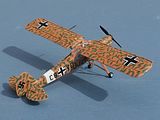
Part 2
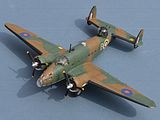
October 2023
Lockheed Hudson Mk.III
Fi-
Background picture: A Storch at the RAF Museum
Assembling the flimsy undercarriage requires a lot of care and patience. The real
thing is quite spindly and delicate looking (it was the dangling legs in flight that
led to the aircraft's nickname "Stork"). Airfix have moulded an equally spindly
assembly, whose attachment points are both delicate and less than obvious. If I
were doing this again I think I would attach the legs before the wings, just to help
with access. I used the landed main strut configuration (the short ones). The struts
themselves had a lot of flash and a few awkward sink holes. I also added the missing
smaller struts at the top of the undercarriage leg, for 2 reasons -
Decals look nice in the box. As expected there is no Swastika and I have no problem
with this since the kit is supposedly suitable for 8+ years old and this symbol has
no place on a toy. Those who want one for historical accuracy can easily obtain
them from other sources (mine are ex-
The completed model is remarkably large (picture with Spitfire below to compare) and although it is quite a simple kit it looks good on completion, but this is definitely one for the more confident and patient modeller.

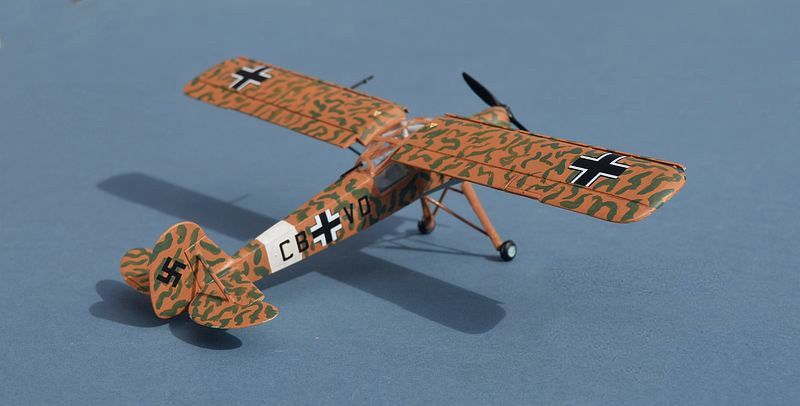
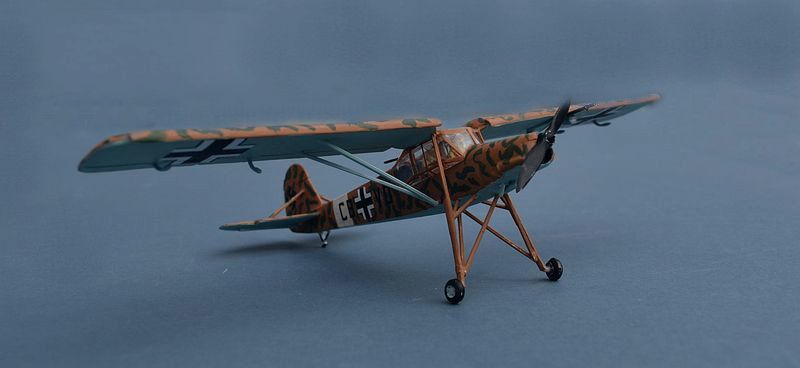
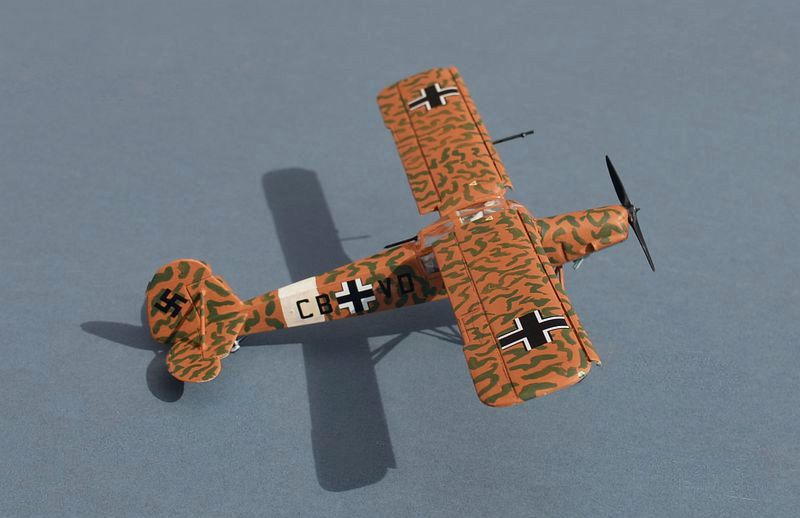
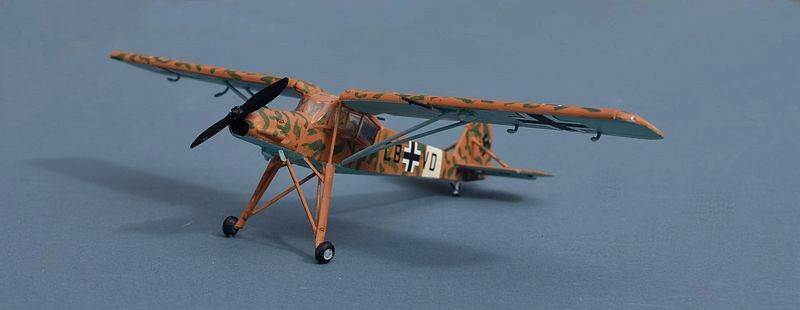
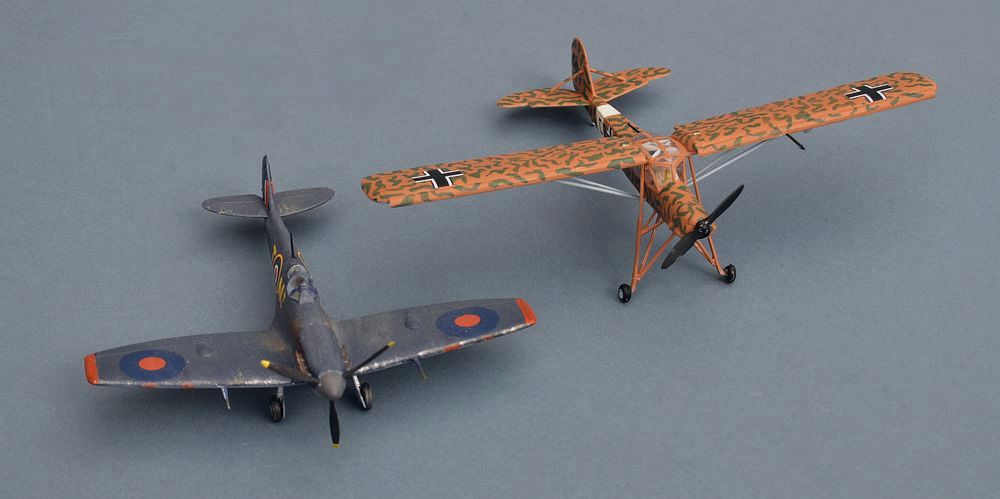
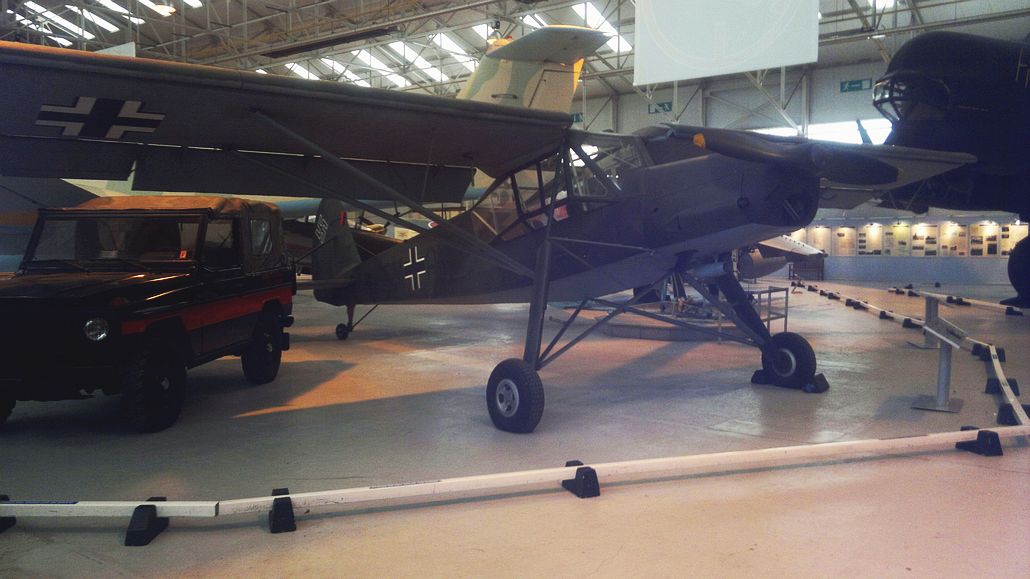
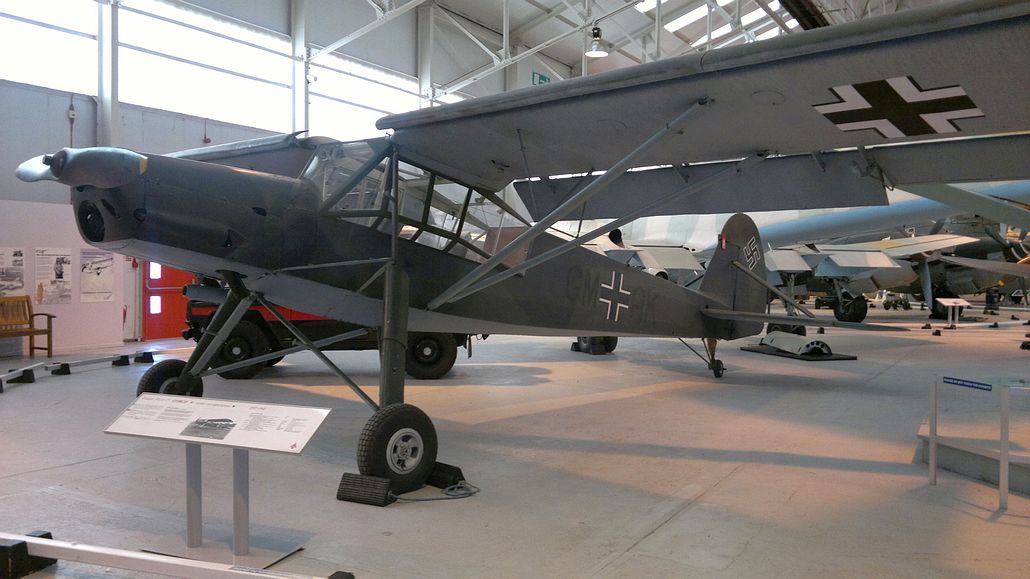
Above and below A Storch at the RAF Museum Cosford
© www.gengriz.co.uk
Link to more Luftwaffe WW2 aircraft on my Adversaries pages
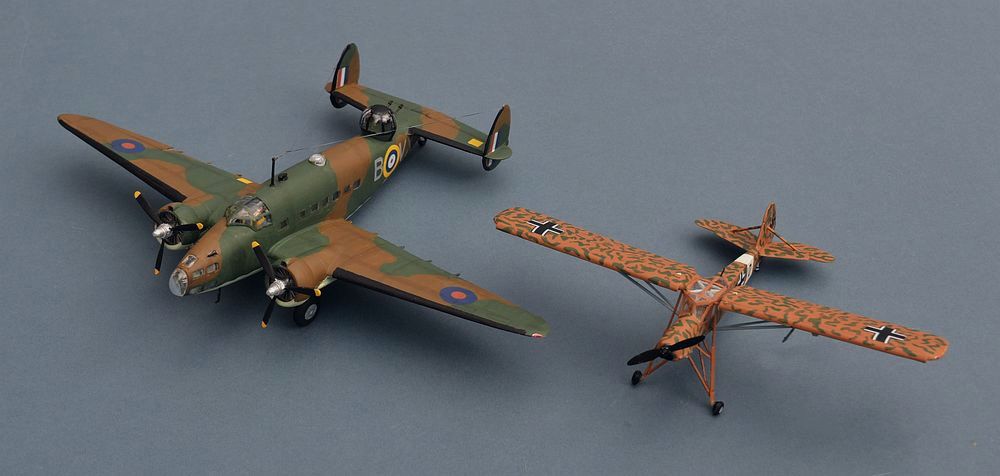
With this month’s other build -